Vibrant Bounty: Chinese Folk Art from the Shaanxi Region
Exhibit dates: August 14 - October 17, 2020
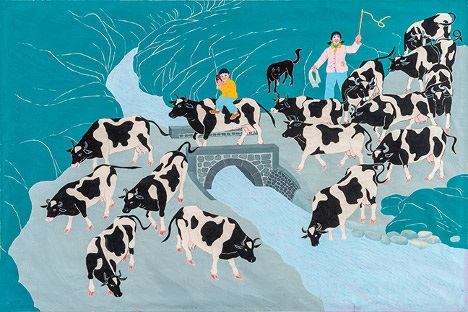
Shengtao Zhao, Harvesting Sugar Cane in the North, 1985-1991, tempera on paper.
As brilliant as the petals of a lotus and as bold as a spring storm, the folk paintings and artifacts of rural China reveal a national spirit that is as charming as it is vital. The artifacts in Vibrant Bounty reveal a humanity that aids us in understanding a people half a world away. By depicting scenes of labor within lavish pastoral settings, the paintings celebrate the farmers’ unity amidst the immensity of nature.
Vibrant Bounty: Chinese Folk Art from the Shaanxi Region invites visitors on a journey through Shaanxi Province, one of the cradles of Chinese civilization. The capital city, Xi’an, was once the eastern terminus of the Silk Road, and is famous for its ancient ruins, most notably the Mausoleum of Qin Shi Huang and his Terracotta Army. In an area outside of the city’s center lies Huxian (or Hu) County, where, since the 1950s, local artists have been producing objects similar to the twenty-five paintings and fourteen objects found in Vibrant Bounty. This tradition has achieved great renown in China, culminating in the state Ministry of Culture awarding Huxian the honorary title of a “Village of Chinese Modern Folk Painting” in 1988.
These peasant, or farmer, paintings are closely related to the traditional Chinese arts of embroidery, batik (a fabric dyeing method), paper-cut, and wall painting. The artists use shui fen (paint powder and water—similar to gouache or tempera) on thick paper to create the paintings. While Huxian peasant paintings depict ordinary aspects of people’s lives, the vibrant colors emanate from an animated atmosphere, and are only enriched by frequent hyperbole and moral connotations. Festivals, parades, the harvest, music, village traditions, farm animals, winter, kitchen work, and children are all celebrated in these paintings.
The artifacts included in this collection expose us further to Chinese rural life and they show, in detail, traditional Shaanxi customs. They range from children’s clothing and toys to New Year’s prints and decorative household items, often embroidered with lucky figures and animals. Not only are they carefully handmade and beautiful, they also hold symbolic wishes for good luck, good marriage, and good health.
Both the art and the objects featured in this exhibition introduce us to a region of China, which like the American Midwest, is dominated by agriculture and populated with working people. Through these peasant paintings and the artifacts which accompany them, we gain a greater understanding of the customs and culture of people who, despite great distances, share with us essential similarities.
This exhibit is curated by America Meredith, Cherokee Nation artist and arts writer and is a program of ExhibitsUSA and the National Endowment for the Arts.



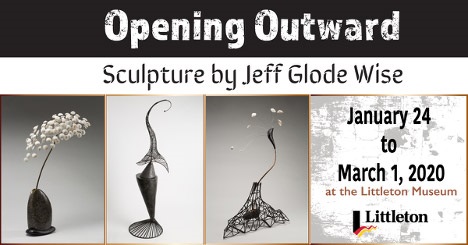
Opening Outward: Sculpture by Jeff Glode Wise
Exhibit Dates: January 24 - March 1, 2020
Wise’s sculpture is rooted in balance, with great respect for materials and their inherent textures. Bases of concrete and wood suggest earthbound elements, while forged bronze and gold plating suggest the fluid motion of the heavens. He interprets visual gestures found in nature and astronomy, from swirling galaxies and the rhythmic movement of birds and fish to the human figure and spirit. In short, he attempts to “elude the grasp of gravity, allowing rocks to float and metal to flow like water.”
In Opening Outward, Wise has gathered some of his works that best reflect his journey of imagination. With a range of interests, the selected works illustrate a pathway of exploration, experimentation, and discovery.
The Way We Played
Exhibit dates: September 13, 2019 - January 3, 2021
By discovering and playing as kids, we grew strong, learned important social and tactile skills, and developed powerful relationships. It is the memory of these experiences, and our connection to our favorite toys, that evoke strong feelings of nostalgia for our younger years.
Using interactive stations, photographs of Littleton locals and their favorite toys, and artifacts from the Littleton Museums' Collection, this exhibit invites visitors of all ages to recall the ways we all played.
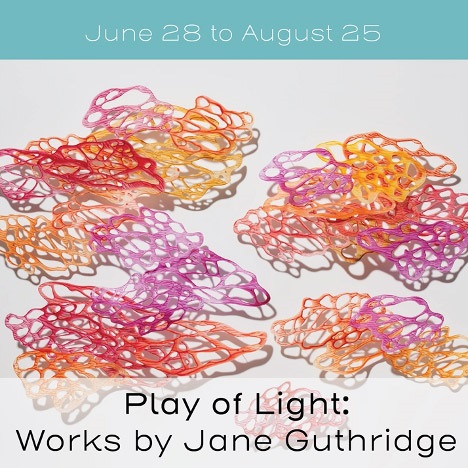
Play of Light: Works by Jane Guthridge
Exhibit dates: June 28 - August 25, 2019
The Littleton Museum is proud to present an exhibition of artwork by Jane Guthridge. With a combination of large installation pieces and smaller dimensional work, visitors are invited to explore the transcendent nature of light across various media and dimensions.
Inspired by the brilliance of Colorado’s sunshine, Jane Guthridge succeeds in manipulating thin, layered materials and altering the directionality of light. Playing with the very nature of light, she manages to capture the intangible by copying shapes made by natural dappled sunlight and shadows, then abstracting those compositions. Whether suspended, layered, or reflected, the “light forms” she creates evoke familiar visions of a moment in nature.
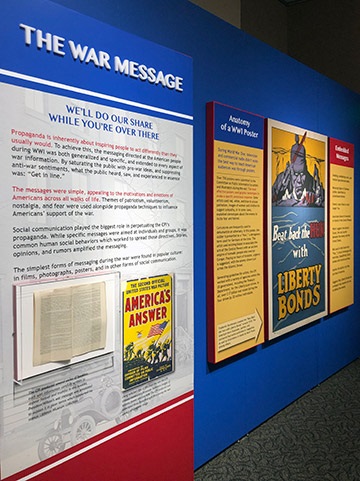
Over the Top: Selling the First World War to a Nation Divided
Exhibit dates: July 27, 2018 - June 2, 2019
Prior to entering the war in 1917, many Americans were against joining the conflict in Europe. A series of dramatic events, including the sinking of the HMS Lusitania, prompted President Wilson to ask Congress for a declaration of war. Within days, the US government mounted the largest propaganda campaign ever seen. Its goal was to convince the American people that survival of the nation and democracy depended upon entering and winning the First World War.
Using images and artifacts from the Littleton Museum's collection, visitors are invited to experience and learn about forms of propaganda and how it was used in World War I.
Full Circle: Works by Terry Maker
Exhibit Dates: June 29 - August 19, 2018
The Littleton Museum is pleased to present an exhibit of works by Terry Maker this summer. Full Circle: Works by Terry Maker will feature over 25 works by the artist, on view June 29 to August 19, 2018. Located in the Littleton Fine Arts Board Gallery, visitors can explore Maker’s unique composition of materials through her interpretation of the circle.
One of Colorado’s premier contemporary artists, Terry Maker has ignited audiences with irresistibly tactile wall reliefs and free-standing sculptures. Through a labor-intensive process of shredding, cutting, and recombining everyday materials, she creates richly imagined objects that evoke both inner and outer space, while preserving a sense of memory and remembrance inherent in those re-assembled things.
Driving these unique transformations is a sense of wonder about the world, and a confidence that viewers will experience something new. Her pervasive use of a basic circle suggests everything from planets and explosions to cell structures, molecules, and water droplets. Terry Maker’s creative process exudes an exploratory energy as she returns full circle to something primal and restless, hewn from ordinary materials.
Preserving Memory and Place
Exhibit Dates: May 26, 2017 - February 18, 2018
In a new exhibit, Preserving Memory and Place, the Littleton Museum demonstrates that shared cultural identity is embedded in the local historic structures we choose to preserve.
The exhibit identifies five familiar places in Littleton, and interprets specific instances of historic designation and presentation. Visitors are invited to experience memorable people, businesses, architects, and buildings in this community, and the transformations some of the places have undergone.
Mile High National Pastel Exhibition
Exhibit Dates: March 9 - September 20, 2017
Pastel Society of Colorado presents its 13th annual Mile High National Pastel Exhibition with over 100 artists from across the United States and abroad that submitted 332 paintings to the competition.
The Best Roads Lead Uphill: A Decade of Paintings by rita derjue
Exhibit Dates: September 23, 2016 - February 26, 2017
In this past decade of work, Rita's vibrant watercolor and acrylic paintings show a more contemporary design, and what she describes as a 'freedom from the ordinary.' Her distinctive use of color and composition, though inspired by many decades of world travel, is not native to her subjects' appearance. Rather, these works exude an excitement for pictorial discovery, often drifting into pure abstraction.
This unique exhibition features notebooks, drawings, and quotations from the last ten years, along with watercolors and large acrylic paintings on canvas.
Fifty Two by Shohini Ghosh
Exhibition Dates: June 24 - September 19, 2016
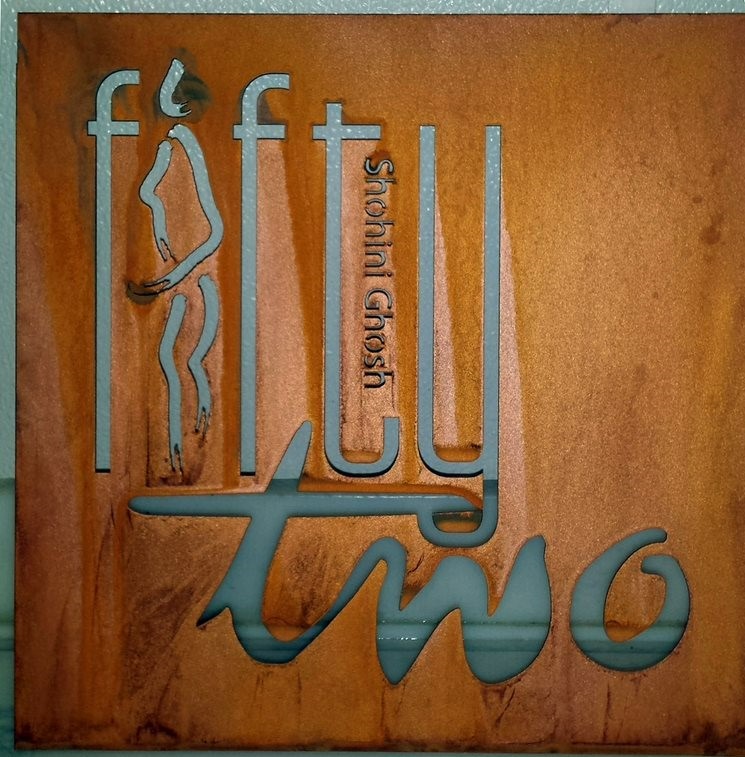
The Littleton Museum is proud to present the sculpture exhibition 52 by Shohini Ghosh.
Born and educated in India, Ghosh is currently a Denver-based artist whose works in bronze and other media are a stylistic representation of various figurative themes of the zeitgeist around us.
52 is about creating a sculpture every week for a year, in the style of au premier coup, or 'first stroke.' Au premier coup is a method where the artist applies each stroke with the intention of letting it stand in the work as part of the final statement. This requires a kind of 'letting go;' a sort of reliance on instinct and intuition with the goal of conveying the idea. Ghosh's 52 pieces are sculptural sketches created from various unhurried moments in life. They celebrate people in common pursuits and illustrate the chemistry of movement in relation to space.
The Littleton Story in 125 Objects
Exhibit Dates: October 10, 2015 - June 19, 2016
The Littleton Story in 125 Objects will feature artifacts from the museum's varied 60,000 item collection. The selected items will each illustrate a moment of time from Littleton's past, and will explore the personal contributions and connections that Littleton's citizens have had on the evolution of their community.
Highlights of the Fine Arts Board Collection
Exhibit Dates: June 26, 2015 - August 23, 2015
The Littleton Fine Arts Board is a seven-member board comprised of volunteer citizens appointed by the Littleton City Council. The board sponsors four scheduled exhibitions at the museum each year.
The board is also charged with acquiring artwork for the city, to be displayed in various public spaces owned by the city. For almost four decades, the Fine Arts Board has collected artwork of all types, compiling a record of Littleton's rich artistic culture. This exhibition offers a glimpse of at the quality and variety of the collection.
Frida Kahlo: Through the Lens of Nickolas Muray
Exhibit Dates: June 20, 2014 - August 17, 2014
Courtesy of Gallery Guest Curator Traveling Exhibitions
Littleton Goes to War: 1941-1945
Exhibit Dates: July 5, 2014 - August 16, 2015
Littleton's involvement in the Second World War is a chapter in the story of America during the war years. From contributions of agriculture, industry, and the home front, to the individual tales of heroism at home and abroad, this temporary exhibit provides a narrative of the Second World War, from a small Colorado town to the global conflict and back.
A Quilter's Craft: Marie Agnes Conway Retrospective
Exhibit Dates: July 11, 2013 - March 16, 2014
Marie Agnes Conway is remembered by her family and friends for many things: her love of family, her giving spirit, and, of course, her quilting. It was through her quilting that the Littleton Fine Arts Board and the Littleton Museum became acquainted with her work.
She began her Littleton years with a dress shop on Main Street named "Marie's." In the mid-1970s, she turned to her childhood interest in the art of guilting, working mostly on machine-made functional bed quilts. She later moved on to strip work, but she insisted on hand stitching because of the texture and feel of the fabrics between her fingers.
After years of research, Marie began to create art quilt which could be framed or hung. She entered art shows in the Littleton area, including the Littleton Fine Arts Board's 'Own an Original' competition; the Littleton Fine Arts Guild's Depot Art Center "The Great Frame Up" show; and the Western Welcome Week "Arts and Crafts Show."
In 1983, she designed and made her first art quilt, a mauve silk shantung spider quilt which was purchased by the Littleton Fine Arts Board for their collection.
In 1985, she decided to make a history quilt for Littleton. It was finished in September 1989, just in time for Littleton's centennial year of 1990. Marie's son, David, was an avid supporter of the quilt and was very anxious to see the finished work. After he died in 1989, she named the quilt "Davi's Hometown," as a memorial to him.
Ramp It Up: Skateboard Culture in Native America
Exhibit Dates: March 8, 2013 - April 28, 2013
Skateboarding is one of the most popular sports on Indian reservations, and has inspired and influenced American Indian and Native Hawaiian communities since the 1960s. An exhibition from the Smithsonian Institution Traveling Exhibition Service, together with the National Museum of the American Indian, celebrates the vibrancy, creativity, and history of American Indian skateboarding culture.
Ramp It Up: Skateboard Culture in Native America will open Friday, March 8, 2013 at the Littleton Museum, and features 20 skate decks, including examples from Native companies and contemporary artists, rare images, and video of Native skaters. The exhibition will be on view through Sunday, April 28, 2013 before continuing on its tour. Ramp It Up was previously on view at the Smithsonian's National Museum of the American Indian in New York, as well as at the National Museum of the American Indian in Washington, D.C.
Mapuche: The People of the Land
Exhibit Dates: June 29, 2012 - January 13, 2013
On loan from the Collection of David S. Irving
David Irving developed his interest in textiles as a student of Dr. Joe Ben Wheat at the University of Colorado and Kate Peck Kent at the University of Denver. He received his MA in Anthropology from DU, and an MFA in Sculpture from the Instituto de Allende in San Miguel de Allende, Mexico.
Irving's study of material culture drew him to the museum world and he worked for several years on the curatorial staff at the Denver Art Museum. He continued to pursue his interests in art and anthropology as a collector of Navajo and Pueblo textiles of the American Southwest. Mr. Irving's focus later shirted to the Mapuche people, indigenous to south-central Chile and the adjacent areas of Argentina. He explains, "Like the Navajo, the Mapuche are renowned as both weavers and silversmiths."
The goal of this exhibition is to bring the story of the Mapuche people, their art and culture, and the struggle to preserve their traditional way of life, to a wider audience in North America.
The Littleton Museum appreciates the loan of Irving's collection, though this is only a representative sample.
Lasting Light: 125 Years of Grand Canyon Photography
Exhibit Dates: December 8, 2011 - February 26, 2012
The Grand Canyon is wild and unforgiving, but also a place for recreation, reflection, and reverence. A new Smithsonian exhibition allows us to marvel at this natural wonder without camping equipment, emergency rations or rappelling ropes. Featuring 60 color photographs, Lasting Light: 125 Years of Grand Canyon Photography is a collaboration between SITES and the Grand Canyon Association.
Covering nearly 125 years of photographic history, the exhibition reveals the dedication of those who have attempted to capture the Grand Canyon on film from the earliest days to modern times. The stunning contemporary images were selected by representatives from Eastman Kodak's Professional Photography Division and National Geographic.
Forged & Fabricated: The Art of Bill Weaver
Exhibit Dates: July 1 - Aug 21, 2011